Hudson Valley Turtle Initiative
Habitat loss and collection from the wild are driving many of the world’s turtle species toward extinction. In the United States alone, there are 23 species whose status is considered Vulnerable, Threatened, Endangered, or Critically Endangered under the IUCN Red List of Threatened Species. Aside from being fascinating animals with a 200 million-year evolutionary history, turtles have a prominent role in the ecosystem and can be indicators of a healthy environment.
Focal Species: The Bog Turtle
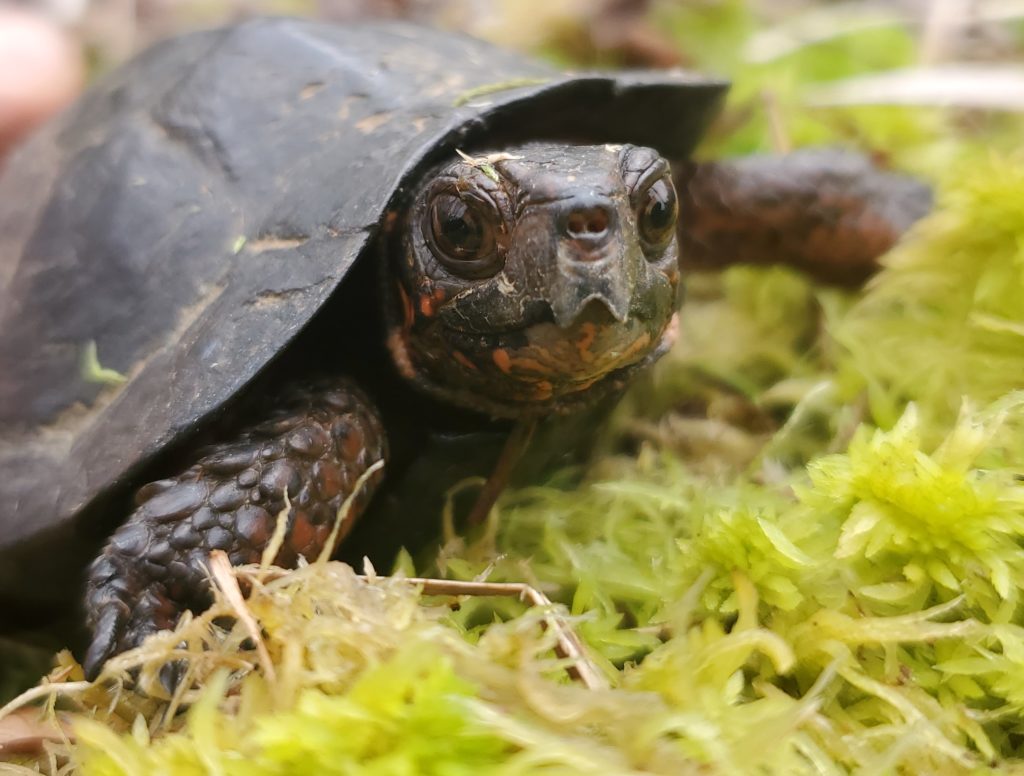
Focal Species: Spotted Turtle
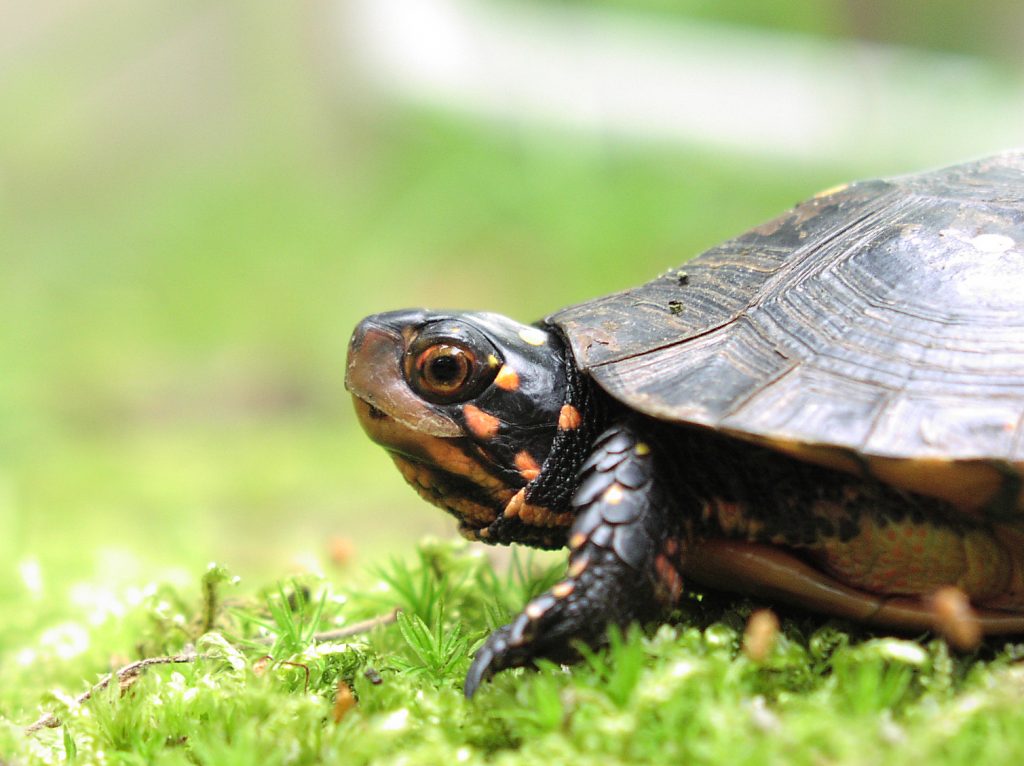
The spotted turtle is a small (10-12 cm), semi-aquatic turtle that inhabits a wide variety of fresh water wetlands. Spotted turtle populations are generally centered around some form of flooded wetland habitat that may occur in the form of marsh, swamp, slow-moving stream, kettle, beaver pond, bog, or modified wetland, including drainage ditch, canal, or farm pond. In all cases, the aquatic habitats contain lush emergent and submergent vegetation, which provide spotted turtles with cover, basking substrates, and foraging habitat. Seasonally, spotted turtles exploit various wetlands beyond their core aquatic areas. Vernal pools are favorite foraging areas in the spring; fens are sought for nesting and have been documented supporting juvenile spotted turtles for the first few years of their lives. Spotted turtles nest in loamy upland soils or atop hummocks within wetlands, similar to the bog turtle. Spotted turtles are omnivorous but forage primarily aquatically. Because of their proclivity for utilizing various wetlands throughout the season, they are highly vulnerable to habitat fragmentation and road mortality.
Focal Species: Blandings Turtle
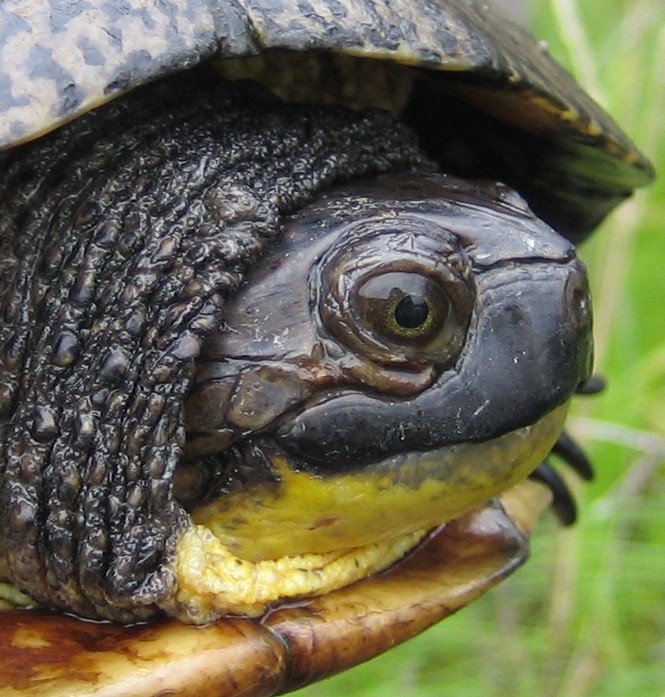
The Blanding’s turtle is a medium-sized (18-20 cm), aquatic turtle that occupies deep, flooded wetlands rich with aquatic vegetation. Many populations in southeastern New York are associated with glacially-formed wetlands known as kettle ponds, which range from large, marshy lakes and small, shrubby semi-permanent ponds occurring within forested upland or wetland settings. The smaller, semi-permanent kettle ponds are vulnerable to seasonal drops in water levels, and thus populations of Blanding’s turtles that utilize these ponds require nearby aquatic refugia in the form of other deeper kettle ponds or alternatives such as such as slow-moving streams, swamps, ponds, and lakes. As aquatic as they may be, the Blanding’s turtle is very adept at overland movement both for seasonal dispersal among core aquatic habitat and nesting. Blanding’s turtles have been documented traveling over a mile to nest. Blanding’s turtle is omnivorous and forages aquatically. Many of the shrubby kettle ponds also support breeding habitat for vernal pool amphibians, which are an important food source in the spring. As a species that travels far and wide to nest and exploit aquatic resources, it is highly vulnerable to habitat fragmentation and road mortality.
Focal Species: Wood Turtle
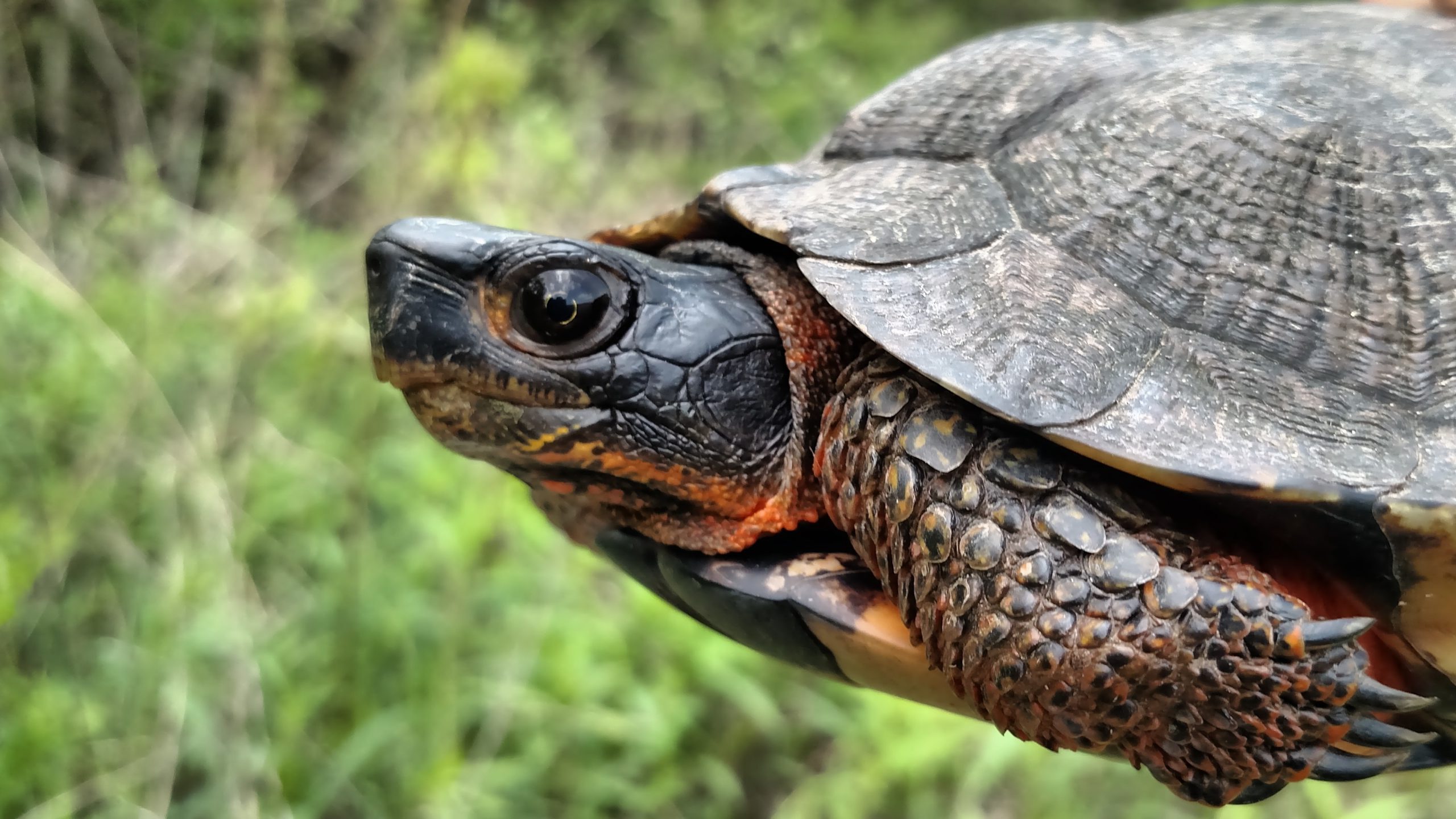
The wood turtle is medium-sized (15-20 cm), semi-aquatic turtle that requires large areas of undeveloped land associated with clean, slow-moving rivers or streams. Wood turtles are generally aquatic between October and March, where they congregate in riverine habitats for breeding (Oct-Nov) and brumation (Dec-Mar). From April to September wood turtles are mostly terrestrial, venturing from the rivers into adjacent forested and scrub-shrub floodplains, early-successional wetlands, upland forests, meadows, and agricultural areas. In the summer, wood turtles often seek wetlands with thick vegetative cover and saturated soils as refuge from thermal stress. Egg incubation occurs within gravelly or loamy substrates within open riparian corridors or more typically, adjacent areas disturbed by agricultural or mining activities. Little is known about juvenile wood turtles; however, in southeastern New York they are frequently encountered in wet meadows and shallow-water habitats associated with riparian zones. Their diet includes invertebrates, a variety of plant matter, and mushrooms. Habitat fragmentation and associated road mortality are the biggest threats to wood turtles in southeastern New York.
Photos
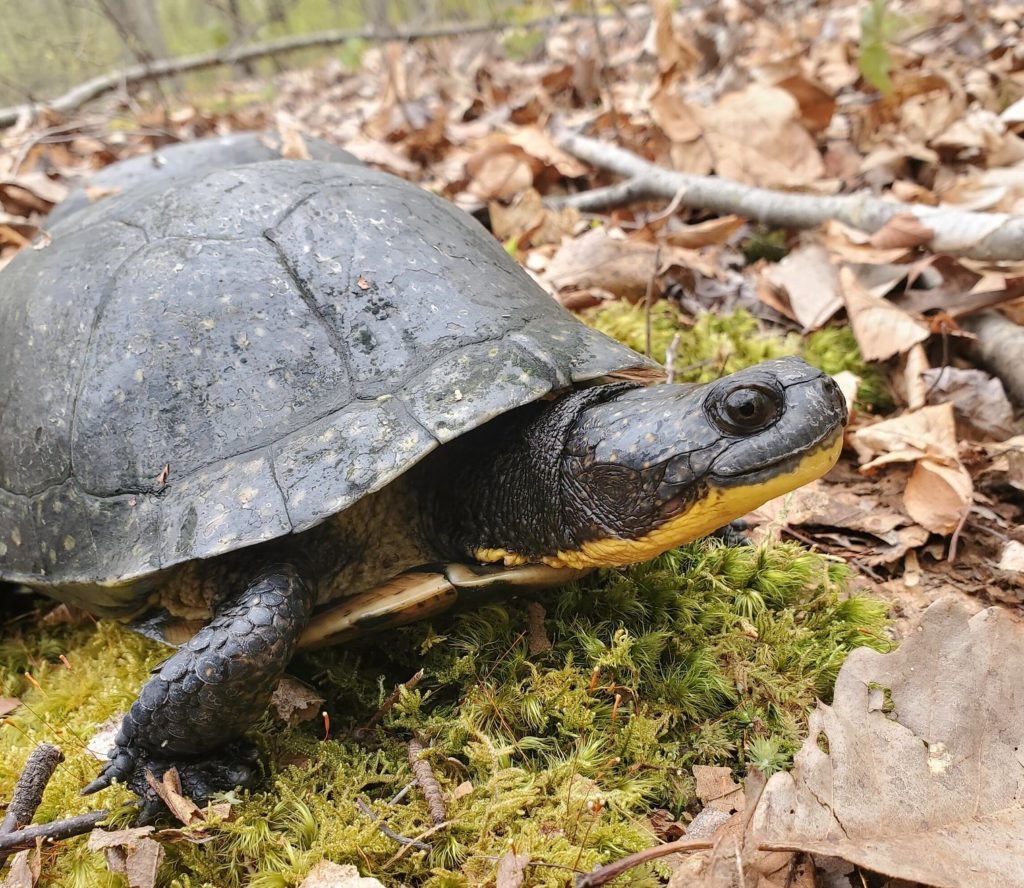
Blandings Turtle, Photo by Jason Tesauro
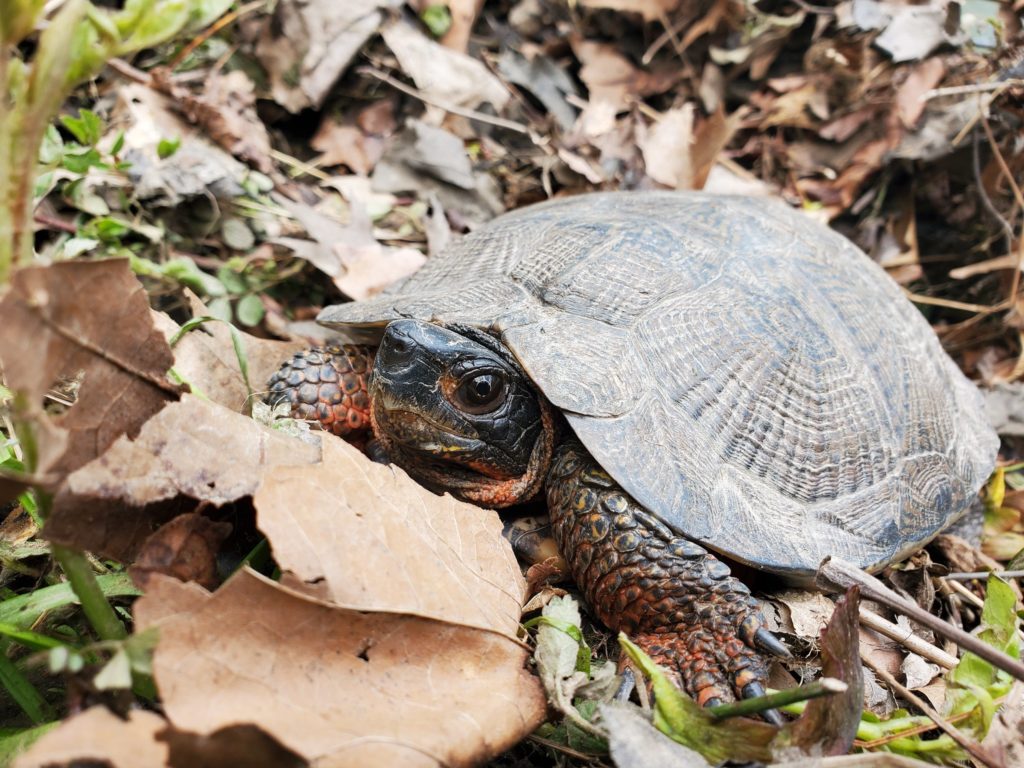
Wood Turtle, Photo by Jason Tesauro
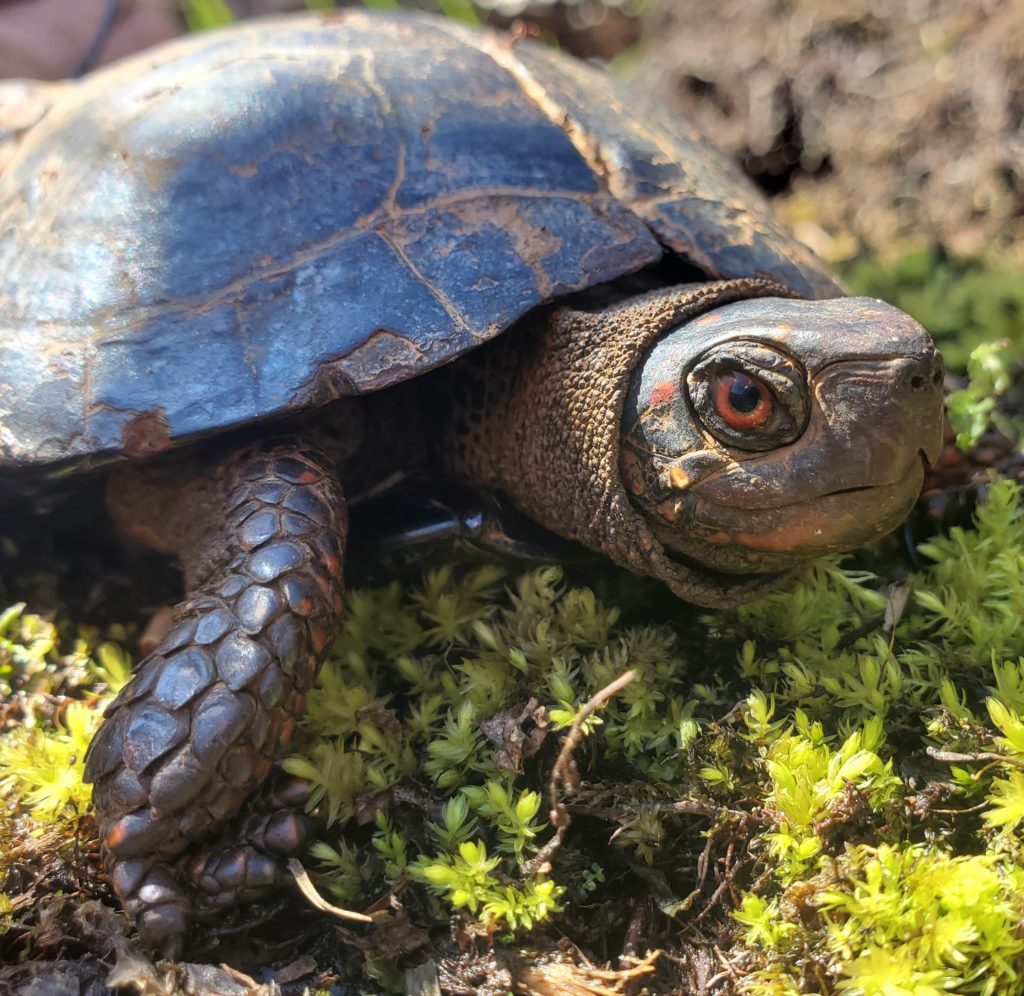
Spotted Turtle, Photo by Jason Tesauro